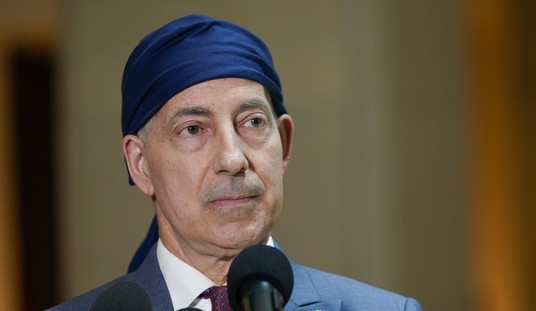Two of my favorite film critics team up in an interview Christian Toto has with John Nolte of Big Hollywood. Christian asks John, “Do you find it difficult juggling deeply held political beliefs with movies that run counter to them when formulating a review? Has this become easier … or harder with time?”
JN: I’ve always felt that this burden was not my responsibility, but the filmmaker’s. If I notice the politics, you’re doing something wrong.
Most movie goers have deeply held beliefs, political or otherwise, and any filmmaker’s primary responsibility involves casting a strong enough storytelling spell so that audiences forget every preconception they walked in with. Recently, I wrote a review of “The Girl with the Dragon Tattoo,” and opened it with m shock over not realizing – until someone told me – that it was a very liberal film. This was a filmmaker who did his job.
People forget that Hollywood was just as liberal and on a crusade to change the world back during the post-”Easy Rider” era that lasted straight through to the late 1970s. And that was a second Golden Age. Many of those films hold up remarkably well today because they’re so expertly crafted you don’t notice the agenda.
Today’s agenda-driven filmmakers just don’t have the artistic maturity and self-confidence to do that and instead build their messaging on straight, thudding, two by four across the head politics. There’s no one working anymore who seems anywhere near capable of crafting a “China Syndrome,” “Norma Rae,” “Coming Home,” “Silkwood” or “M*A*S*H.” The last truly great politically liberal film was Tim Robbins’ “Dead Man Walking” in 1995, the last universally appealing one was John Travolta’s “A Civil Action” in 1998 and the last effective one was “Brokeback Mountain” in 2005.
The films of the 1970s were an interesting transition period, after the New Left had seized control of Hollywood from the old moguls, the men who founded the industry, but while some of the craftsmen from the earlier era were still around and eager to work. Plus, films still had to compete for the dollars of mainstream American audiences with relatively diverse points of view. Increasingly in recent years, the ability to bury political themes in the subtext of a story had gone out the window, and both sides began producing overt agitprop. The left began doing this once Michael Moore demonstrated how to relatively cheap documentaries to the Blue States; the right after The Passion became a surprise monster hit.
As I wrote in October of 2008, after being disappointed by An American Carol, a film I very much wanted to love, and responding to Roger L. Simon’s critique of both it, and Oliver Stone’s W, “Political Movies: It’s the Quality, Stupid:”
Want really sinks both movies is the desire to produce agitprop, to tell an overtly political story. I hope that there are many more conservative movies–both to compete in the marketplace of ideas, and to reduce the near-monopoly that the left currently has on moviemaking. But I’d like to see them evolve to the point where their politics are subordinate to a good story, instead of vice-versa, as An American Carol seemed to me when I watched it in rough cut form at the Republican National Convention in late August. I had hoped that some of the flaws that were evident in this pre-release version would have been reduced in the final tweaking before the film hit the theaters, but it appears that that didn’t occur. (You can hear the segment featuring Roger, Glenn Reynolds and myself interviewing those associated with the movie from an early September edition of PJM Political.)
Budding filmmakers on the right could learn much from the lefties of the 1950s, who were forced, because of the Hays office, to bury the more subversive elements of their films. Which worked in their favor–it produced infinitely more enjoyable movies than say, the World War II-era Mission To Moscow, arguably the most extreme example of leftwing agitprop to emerge from the Golden Era of Hollywood. As I wrote last year:
In the 1950s and up until the mid-1960s, it was possible to sneak all sorts of leftwing ideas into films by burying them deep into the subtext of the shooting script. Did you think that The Hustler was merely a film about a down-on-his-luck pool bum brilliantly played by Paul Newman? So did I–until I listened to the audio commentary on the DVD, and discovered that it was a film about the Blacklist. (Hey, if you say so, guys.) Similarly, on one level, it’s possible to argue that The Manchurian Candidate is a leftwing fantasy concerning the assassination of Joseph McCarthy, but the film’s incredible pacing, plot twists, and eye-popping cinematography help to soft-sell that it’s yet another anti-McCarthy movie. And from the same era, while Dr. Strangelove is obviously an anti-military/anti-Cold War film, its Swiftian absurdity and brilliant screenwriting, and pox-on-both-sides message makes it all go down remarkably smooth.
There was less need for this once the G/PG/R/X rating system replaced the Hays Office. (Which had a variety of unforeseen consequences.) But the craftsmanship built up over several decades of moviemaking still showed through in numerous films in the post-Hays, post-Bonnie & Clyde , pre-Star Wars late 1960s and 1970s.
And speaking of the latter, it’s a textbook example of a filmmaker employing exactly the methods I describe above to produce what turned out to be a staggeringly commercially successful movie.
As I said, budding conservative filmmakers could learn much from this period.
Oh, and speaking of agitpropumentaries, Hollywood is apparently about to begin production on a documentary about Rachel Carson of Silent Spring fame.









Join the conversation as a VIP Member